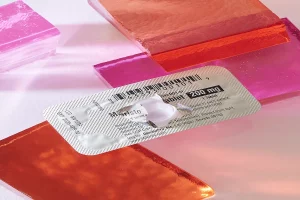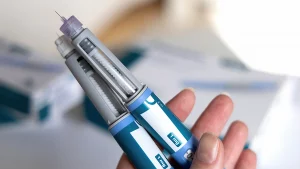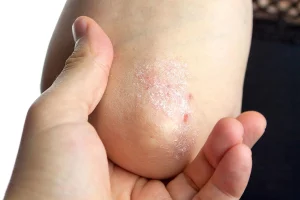Many men have likely never heard of Peyronie’s disease, but they might want to brush up on this condition because it causes the penis to curve abnormally during an erection.
Peyronie’s disease typically affects men over 30, and it appears to be caused by the build-up of plaque in the tunica albuginea. The tunica albuginea is the inner lining of the penis, and it helps the penis remain stiff during an erection. Here, experts will explore what Peyronie’s disease is, its causes, symptoms and how it can be treated.
What is Peyronie’s disease
According to the National Institutes of Health (NIH), Peyronie’s disease can develop when there is a physical injury to the penis, scar tissue forms, and the hard plaque that can build on scar tissue pulls on the surrounding tissue of the penis and causes a curve, usually when the penis is erect.
In a patient page provided by the Journal of the American Medical Association, Dr. Christopher Gaffney and Dr. James Kashanian, both urologists at New York-Presbyterian Hospital in New York City, state that “Peyronie’s disease can cause pain (with or without erections), inability to engage in penetrative sexual intercourse, erectile dysfunction, emotional distress, depression and relationship difficulties. It develops in up to 5% to 10% of men.”
Peyronie’s disease versus normal curvature
The Cleveland Clinic uses the analogy of a clock to measure the curve in a penis and help distinguish Peyronie’s disease versus normal curvature. An average penis may have a curve of 5 to 30 degrees. A 5-degree curve looks like when the hands of a clock read 9:13; a 30-degree curve looks like 9:10. Peyronie’s disease may cause your penis to look as though it has an indent or hourglass shape. You may also notice a loss of girth or length in your erection.
What causes Peyronie’s disease
The NIH reports that the exact cause of Peyronie’s disease is unknown, although it is suspected that a chronic or acute injury to the penis or an autoimmune disease may be factors.
Your risk of Peyronie’s disease increases if you have the following:
- Vigorous sexual (or nonsexual) activities
- Diabetes and erectile dysfunction
- Prostate cancer and surgery
- Family history of Peyronie’s disease
- Connective tissue or autoimmune disorder
Peyronie’s disease symptoms
The NIH lists the following symptoms of Peyronie’s disease:
- Hard lumps on one or more sides of the penis
- Pain during sexual intercourse or with an erection
- A curve in the penis with or without an erection
- Changes in the shape of the penis, such as a narrowing or shortening
- Erectile dysfunction (ED)
The symptoms may develop quickly or over time, and they can be mild or severe.
Peyronie’s disease treatment
Peyronie’s disease treatment depends on how long you have been having symptoms. The Mayo Clinic describes the acute phase as when you have pain or changes in curvature, length or deformity of the penis. The chronic phase is when the symptoms are stable, and no further changes occur. Peyronie’s disease treatments are based on the level of deformity and severity of symptoms.
Your health care provider may recommend penis traction and medical or injection therapies during the acute phase. In the chronic phase, several treatments are available, including waiting, injections, traction or surgery.
Peyronie’s disease medications that may be prescribed are:
- Collagenase: U.S. Food and Drug Administration-approved, it works by breaking down the build-up of collagen that causes the curvature
- Verapamil: Often used to treat high blood pressure, it appears to disrupt the production of collagen and may reduce pain
- Interferon: Disrupts the production of fibrous tissue and helps to break it down, and may also reduce pain
Peyronie’s disease medical procedures include penile traction, which stretches the penis with a mechanical device over a period of time to decrease the deformity and increase the length of the organ. It may be used in the acute phase, or combined with other treatments in the chronic phase, for example, after surgery.
Surgery is usually recommended if the deformity is severe or prevents you from having intercourse. It typically isn’t offered until the curve is stable for three to six months and may consist of the following options:
- Suturing the unaffected side: This results in a straightening of the curve.
- Incision, excision or grafting: Scar tissue may be removed, and a graft is sewn into place in the tunica albuginea. This surgery increases the risk of erectile dysfunction, compared with suturing.
- Penile implants: Placed in the spongy part of the penis that fills with blood, it may be semirigid and manipulated to cause an erection for intercourse. One type of implant contains a pump and is used if erectile dysfunction is a concern.
If you are experiencing any of the symptoms of Peyronie’s disease, consult your health care provider.
Source: HealthDay
Copyright © 2025 HealthDay. All rights reserved.
















